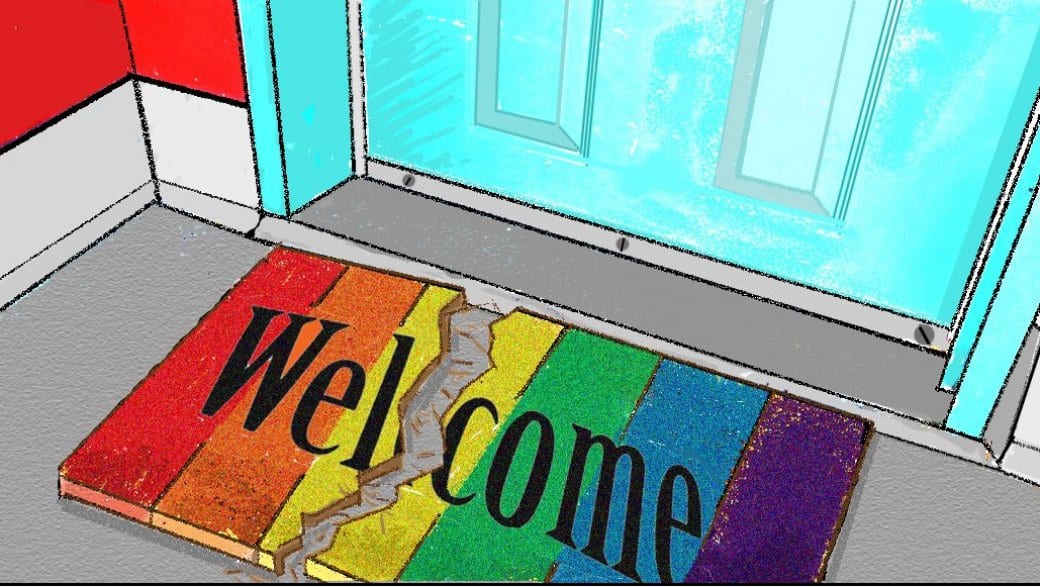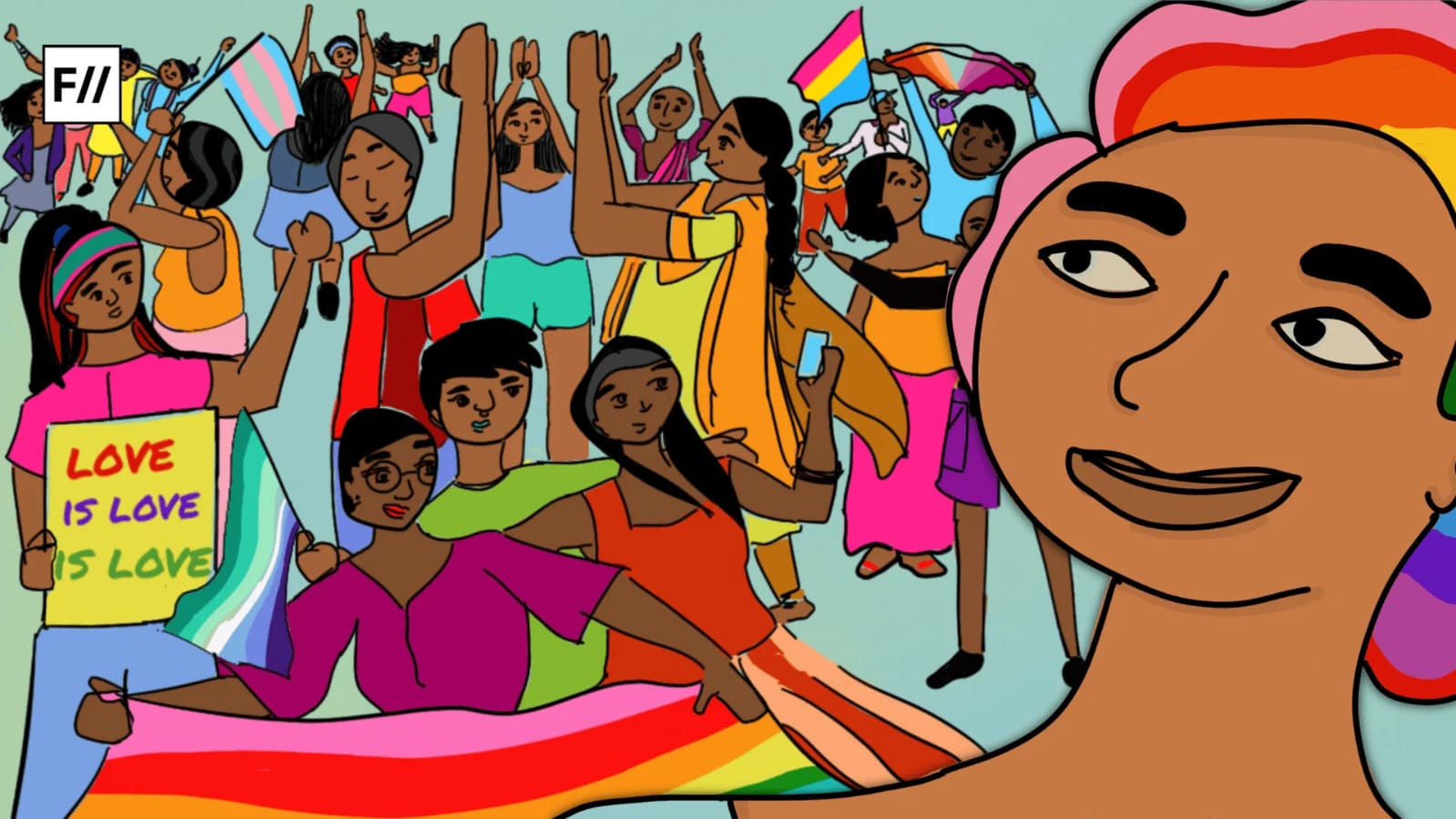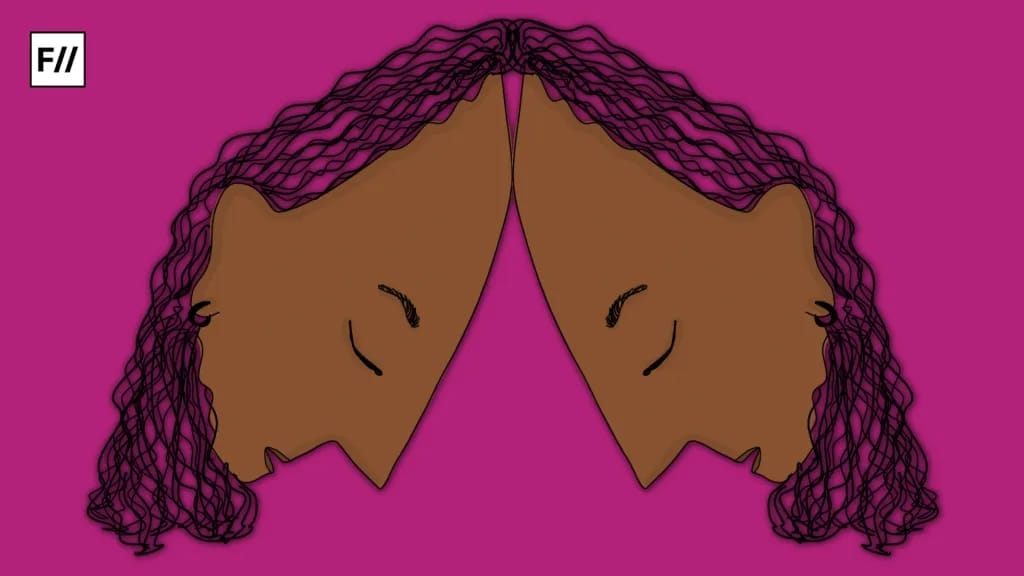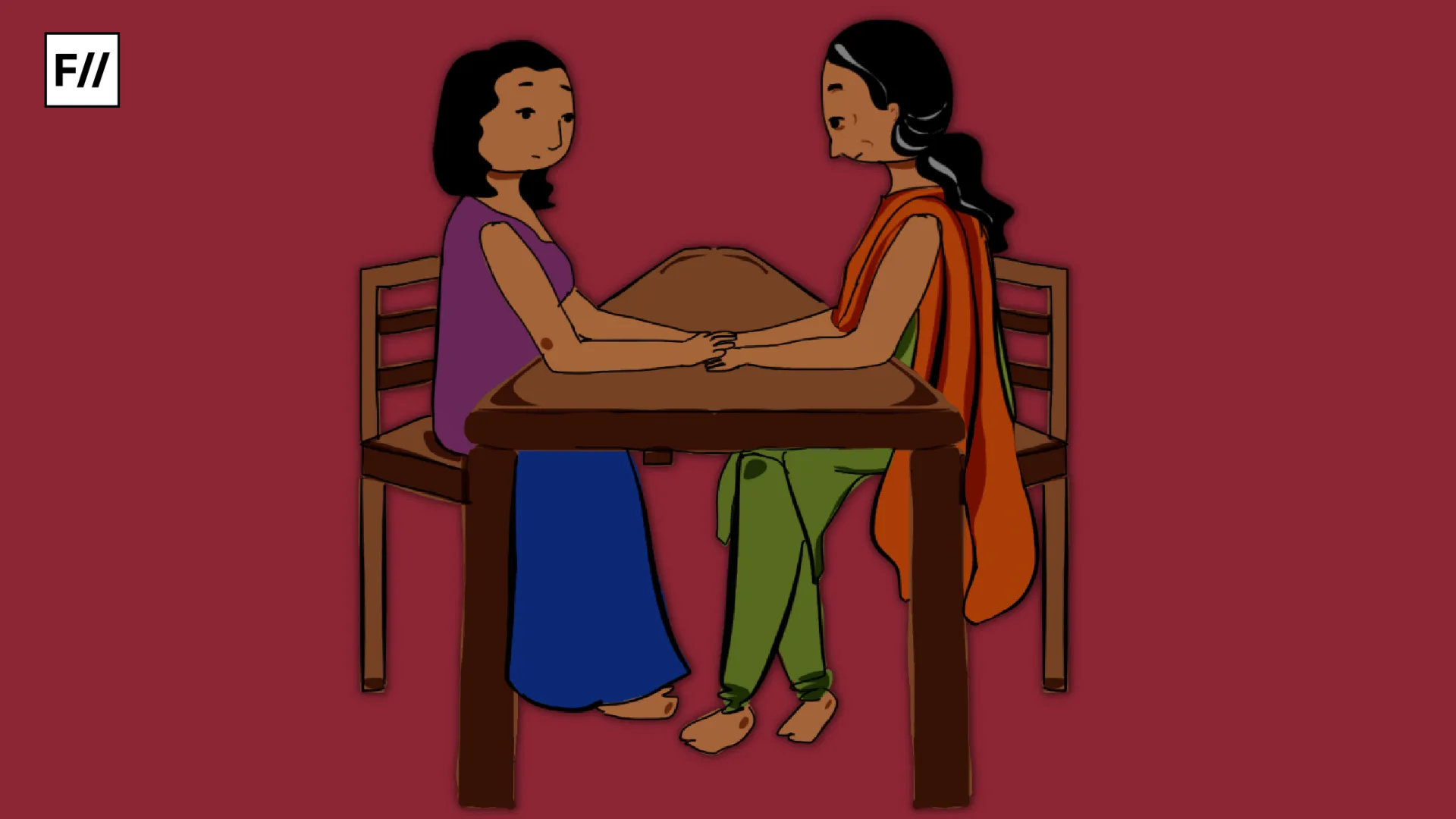Editor’s Note: FII’s #MoodOfTheMonth for June 2022 is Pride Solidarity. We invite submissions on the many layers of this theme throughout the month. If you’d like to contribute, kindly refer to our submission guidelines and email your articles to sukanya@feminisminindia.com
A few days ago, BBC News published a piece titled, “Reunited Indian lesbian couple say still afraid of their families.” After an ordeal that culminated in a court victory for the LGBTQIA+ community, Adhila Nassrin and her partner Fathima Noora, hailing from Kerala, have finally been able to live together.
While cognisant of the larger structural barriers that the society has bound them in, the couple said that getting away from their ‘homes’ is something to be ecstatic about, as they felt “suffocated all these years at (their) homes.”
They say home is where the heart is and the reality of many individuals belonging to the queer community tells us that the homes they have been brought up in, clearly do not have the space to hold their hearts. The houses that many were taught to call home, have become their prisons. It is because of this restrictive nature that moving out of homes is more than a rite of passage for Indian youngsters. It is an act of liberation and carving space to find themselves.

Conversely, youngsters try to build alternative safe spaces in their friend circles and online platforms that show openness and acceptance, uncharacteristic of traditional homes. With a patriarchal conscience rooted in the gender binary, a good proportion of Indian families still do not have a democratised atmosphere that is inclusive of trans experiences. Financial dependence in such spaces comes at the cost of losing one’s voice.
This is where the physical distance afforded by moving out of homes becomes beneficial for the exploration of gender and sexual identities. Even for people who do not identify themselves out of the cis-heteronormative narrative, this space helps to extend support to the queer community without fear.
From emotional abuse to forced conversion therapy, the responses to queerness in such abusive domestic environments are based on the societal norms of honour and shame for a family, and never on the happiness or truth of its members. Ironically, while many families believe in the practicality of conversion therapy that the National Medical Commission recognised as a ‘professional misconduct’, they are averse to psychotherapy sessions. This regressive approach towards mental health practices in households puts individuals from such communities at greater risk as they often require mental health support to deal with the dysphoria, and anxiety induced by the absolute societal and familial disregard for their identities
Aadhila and Fathima’s experience also bears testament to this fact, as both of them took refuge at the Vanaja Collective, a shelter for marginalised communities to escape their homes, located in Calicut, Kerala. They have also expressed their gratitude for the support they received from online platforms.
Shreya* explains that home situations are detrimental to the development of any sort of identity that is not perceived to be ‘normal’. She says, “The gender expression expectations at home were too difficult to fight with. It would regularly lead to conflicts and hurtful comments. Moving out gave me the confidence to perform my gender roles without being rebuked and judged. Staying by myself also allowed me to spend time with my partner in a safe space, thus giving me a deeper understanding of my sexual orientation and body.”
As homes act as primary socialisation agents, we must identify the biases and prejudices we harbour and teach in homes. From being treated as a joke to blatant disregard to active hostility, many patterns of harmful behaviour force youngsters to not explore their identities within their homes.
The fear of societal sanctions or “what will they say?” prevents even the thought of trans or queer identities. In a society where even heteronormative expressions of sexuality or attraction are morally policed, homes become sites for the erasure of queer realities.

The lack of other support systems instills the fear of the cost of rebelling against families. Ritu Nanda (they/he) who identifies as non-binary, recalls their experience, “My father is not at all supportive. He even told me that he would break my legs and lock me up if I brought shame to the family and him. He told me I should live by his wishes in his home. The next day I moved out of my home as it has become unsafe for me. After moving out I felt a huge weight lifting off.”
Family members are the primary offenders in cases of abuse against members of the LGBTQIA+ community, according to the ‘Out of the Margins‘ project of the U.K-based queer rights organisation Stonewall. Additionally, according to data by the U.K LGBTQIA+ anti-abuse organisation Galop, one in three people in the queer community in Britain reported experiencing abuse from immediate family members, which the Guardian referred to as a “hidden epidemic.”
The absence of such a physical system is perhaps balanced by the online safe spaces that the queer community has built for itself. The exploration of such platforms also requires a headspace that households seldom provide for the LGBTQIA+ community. Social media has aided in raising awareness of the queer community and giving them power. Such digital ecosystems are vital in offering support to people who have moved out of their homes. However, they do not completely fill the vacuum of safe neighbourhoods and spaces to call home
From emotional abuse to forced conversion therapy, the responses to queerness in such abusive domestic environments are based on the societal norms of honour and shame for a family, and never on the happiness or truth of its members. Ironically, while many families believe in the practicality of conversion therapy that the National Medical Commission recognised as a ‘professional misconduct’, they are averse to psychotherapy sessions.
This regressive approach towards mental health practices in households puts individuals from such communities at greater risk as they often require mental health support to deal with the dysphoria, and anxiety induced by the absolute societal and familial disregard for their identities. The dearth of queer affirmative therapists in India adds to the problem. If at all one finds a good therapist, many households are incapable of providing the privacy and space for healing that therapy requires.
“Acceptance is hard for my family because they are conflicted with love, religion, and societal stigma. I have slowly learned to accept that. I have no privacy as such nor anyone to talk to about these issues or questions even though I have tried many times. It is an avoidant approach,” Jerry* remarks when talking about opening up to his family about his identity as a gay man.
He adds that the experience of moving out while liberating was “not all sugar and candy”. “Rather, there was no support and I often had experiences with the worst of the crowd which is very much damaging. I would say someone to help and guide you would have been extremely nourishing…both for the mind and soul, which I did not have,” he says.
Also read: Launda Dancers: The Marginalised Queerness Of Dancing Male Bodies

“As we move out of our homes(out of our comfort zones) we are put in difficult situations, and our fight or flight response gets activated. We see ourselves through the eyes of peers around us, and that makes us introspect a lot about our persona en toto”, says Himanshu, citing her experiences as a transwoman and an asexual individual.
Moving out of homes does mean getting away from some chokeholds but not all, in a society that is deeply phobic of any sexual or gender expression deemed ‘deviant’. Counselor Mahesh Natarajan who works with queer individuals details the challenges faced by people from the community in finding housing facilities.
“Ever-questioning landlords and judgmental neighbours have been a huge concern. There have been bitter instances, in which people get evicted by landlords and are subjected to harassment. Complaints are lodged with the housing society, leading to the tenants being asked to vacate the apartment. Many a time, people from the community have had to compromise on location or have had to pay up more just to be able to retain a space that they have taken upon rent. Landlords not paying back the security money is another major concern”, he remarks, in a chat with the Entertainment Times.
The absence of such a physical system is perhaps balanced by the online safe spaces that the queer community has built for itself. The exploration of such platforms also requires a headspace that households seldom provide for the LGBTQIA+ community. Social media has aided in raising awareness of the queer community and giving them power.
Sakshi Juneja claims that the major reason why she started the Gaysi blog in 2008 was to fulfill her desire to simply hang out with other LGBTQIA+ people. The site has over a thousand LGBTQIA+ users who share their stories daily and connect. It provides them with a base of support and a forum where they can open up about their unique experiences without fear of retaliation, Sakshi remarked during the panel discussion on Queer Networking by Godrej India Culture Lab.
Such digital ecosystems are vital in offering support to people who have moved out of their homes. However, they do not completely fill the vacuum of safe neighbourhoods and spaces to call home.

A notable move in this direction is perhaps GHAR (Gay Housing Assistance Resource) founded by Sachin Jain to eliminate the difficulties in finding accommodation that he himself faced when he moved out of his home in 1998. Sweekar – The Rainbow Parents, a support group for parents of LGBTQIA+ people, serves as an example of how homes themselves can be made more LGBTQIA+ friendly. Constant awareness and questioning of our biases is the only way we can transform houses into homes.
Homes must be safe spaces that facilitate questioning, checking one’s biases and privileges, and an opportunity for everyone’s voices to be heard. Unless our households become that, the queer community cannot be their authentic selves in the buildings that they are forced to call ‘homes’.
Also read: Queer Coding, VPNs, Blockchains: How Technology Becomes An Ally To LGBTQIA+ Solidarity
*Names changed to protect privacy
Featured Image Source: Xtra
About the author(s)
Stephy is a masters student in Jamia. Her interests revolve around issues of conflict and peace, gender and mental health. She hopes to shed her inherent biases daily and become a better ally each day




